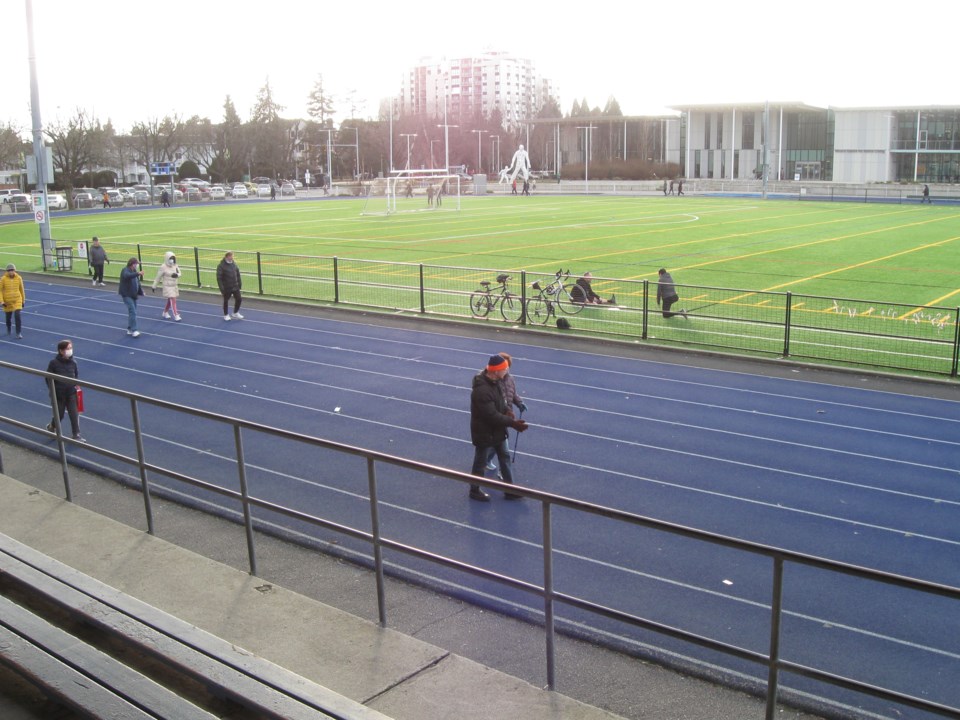I think of Minoru Park, with its various amenities, as Richmond’s crown jewel. People congregate there from before sunrise to after sunset. It’s a real benefit to the community. I’m often there for at least an hour of steady walking, without having to worry about being hit by a car. If it weren’t for the track at Minoru Park I’d probably be walking in my neighbourhood, constantly on the watch for drivers going far too fast in a residential area even though the streets are deliberately laid out in curves to deter speeding.
I refer to it as my neighbourhood, but it’s hardly a neighbourhood anymore. When my parents moved here in 1968, it definitely was a neighbourhood. Back then you knew the names of all the people on your street, you’d often exchange a few words with the neighbours whose backyards were adjacent to yours, because then people actually came outside to be in their backyards. Today, when I pass one of the houses, if I happen to glance up at the living room window I usually see a huge TV screen, with images flickering across it. Has technology made neighbourly interactions obsolete? How can it possibly compensate for real life?
It used to be that if you sensed danger or trouble, you could call on your neighbours for help. Most of us don’t feel that way anymore. More often than not we don’t know the people, especially the younger ones, who live on our street. We rarely see them outside, but when they are outside, they’re usually glued to their smartphones or driving somewhere in their cars. It’s become rare to see little kids playing outside. Currently I am extremely fortunate in having a family with two small children renting the house next door. Those kids love to play in the yard, and I love to see them and listen to them. You can learn a lot from listening to, and watching, youngsters because they’re rarely afflicted with the prejudices or inhibitions that oppress us adults.
The irony in all this is that Richmond is devoting a lot of energy and money towards building our sense of community. And they’re doing an admirable job. But all the while I keep wondering, what constitutes a community, what is it composed of? The people who live in it? And are the people simply equivalent to houses, to addresses? In which case, is the community just a certain number of inhabitants, with the physical location the only thing that connects them?
Shouldn’t a community be composed of neighbourhoods, and neighbourhoods be composed of neighbours? In 2011, one of the first columns I wrote for Richmond News was about neighbours. Then, eight years later, I wrote a column about neighbourliness, inspired by what I saw happening at the modular housing on Alderbridge Way, where people were sitting outside on the steps, talking, being neighbourly. It was like a scene from times gone by.
You know that saying, “can’t see the forest for the trees”? It means to lose the larger picture by focusing on the details. Are we now experiencing the opposite, unable to “see the trees for the forest”? That, anyway, is what I keep asking myself.
Sabine Eiche is a local writer and art historian with a PhD from Princeton University. She is passionately involved in preserving the environment and protecting nature. Her columns deal with a broad range of topics and often include the history (etymology) of words in order to shed extra light on the subject.



